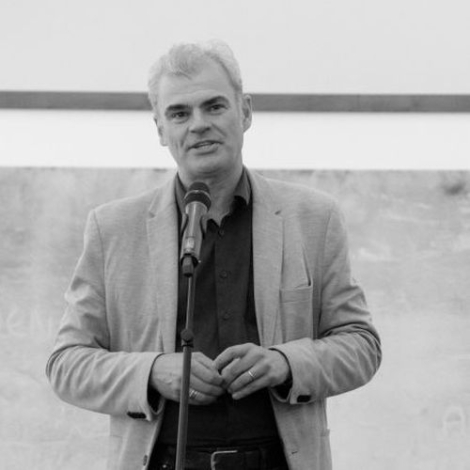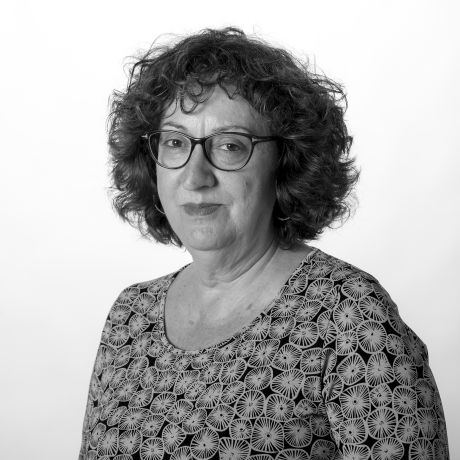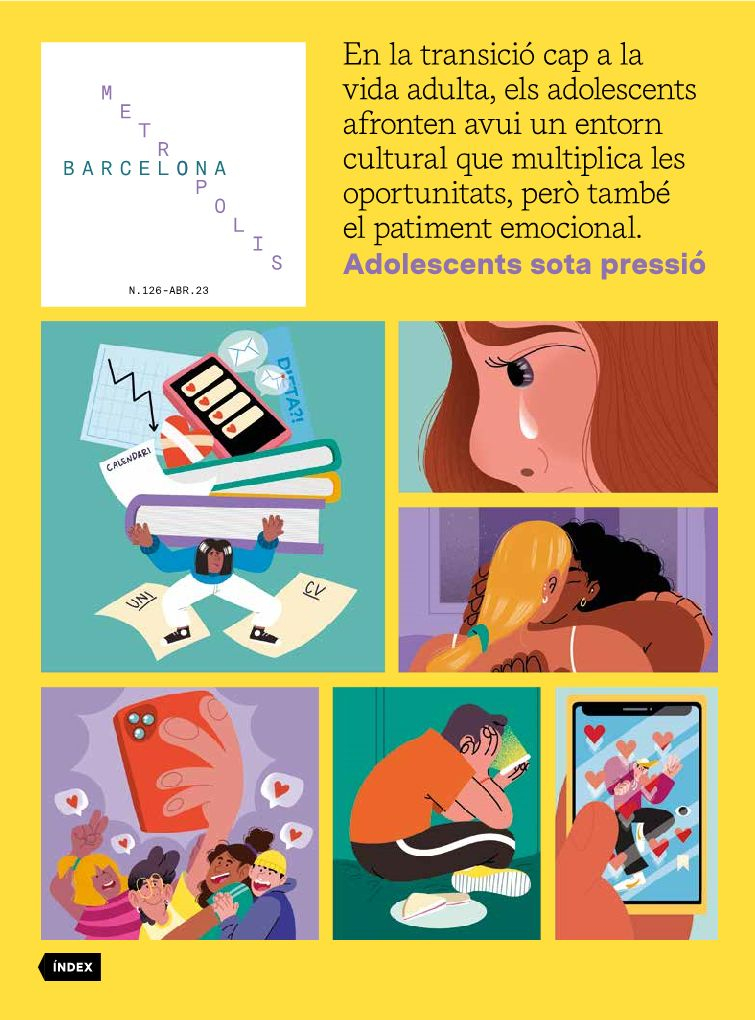The future of museums. In pursuit of (new) audiences?
- Culture Folder
- Debate
- Apr 23
- 13 mins
Are museums in crisis? Depending on where we stand. Like the society they mirror, these marvellous artefacts of knowledge and enjoyment are constantly evolving. And while a couple of years ago they were the pretext for the urban redevelopment of cities, today they are being asked to be social, sustainable and inclusive. Is this their role? Audiences, or part of them, are seeking experiences, real and virtual, and are increasingly critical of the authoritative narrative they represent. We spoke to nine experts who have reflected on the issue.
The pandemic is a thing of the past, and in 2022 Barcelona’s museums recovered a total of three out of every four visitors compared to 2019. Some more and some less, depending on their level of attractiveness for tourists. As always. Or not. Some things have changed, others have gathered pace. During this time, for example, the Government of Catalonia’s Museums 2030 Plan has been approved, agreed with the sector, which places the emphasis, as museologist Olga López says, on a social museum model linked to the major debates of the time. And ICOM, the International Council of Museums, after three stormy years of debate, has agreed on a new definition that states that they must be “inclusive”, “foster diversity and sustainability” and “operate and communicate ethically”.
As the critic Iván de la Nuez explains, all this is happening at a time when the aspiration of some museums, above all contemporary art museums, to be the great agora of civic debate is being called into question. The audience – or audiences – are perhaps going the other way. Something to think about is the fact that the Moco, the “museum” on Carrer Montcada that exhibits a private collection, has almost twice as many visitors as the MACBA, notwithstanding the chasm between the cultural demands of each. Or the success of the Ideal’s immersive exhibitions. Some visitors are looking for the experience, they want to take centre stage, they want to immerse themselves in the works of art. Museums, the real ones, find it difficult to compete with them, but they will have to adopt some of these strategies.
It will be fascinating to see how Barcelona’s art centres deal with this demand and perhaps the new phase of the Museu del Disseny [Design Museum], now under the direction of José Luis de Vicente, an expert in art and new technologies, will be key. It will also be interesting to see how they address the demand to break away from the patriarchal model and to decolonise the collections and their narrative beyond the possible requests for the restitution of works. There are many new developments on the horizon. This year, for example, we will get a better look at the new direction that the scientist Carles Lalueza is giving to the Museu de Ciències Naturals [Natural Science Museum] to turn it into a first-rate research and dissemination centre. Everyone is paying attention to what now matters to audiences. We must listen, rather than impose, as Pepe Serra, director of the MNAC, reminds us. It is no accident that the ever-leading CCCB, as its director Judit Carrera explains, has now created a “new audiences” department. It is the way forward.

Olga López
Project manager at the Maritime Museum of Barcelona
Museums have begun to evolve from the traditional museum model that most people have in mind when they think of the museum institution. They have begun to integrate the concerns of today’s society and are sensitive to general contemporary issues, such as inequality, sustainability, environmental conservation, social cohesion and the integration of people at risk of exclusion, etc. A path of no return towards the social museum model has begun.
This process has largely gained momentum thanks to the roadmap towards the social museum model represented by the Museus 2030, Pla de Museus de Catalunya [Museums 2030, Catalan Museums Plan], drawn up by the Government of Catalonia in conjunction with the museum sector.
This vision must cut across the whole organisation, recognising that the museum is a body that provides a service and a response to the concerns of its city and the community in which it is integrated.
However, museums cannot go down this road alone. The authorities on which they depend, especially in the case of public museums, must commit themselves to acknowledging their values and supporting their actions from every angle. Not only in terms of financial resources, but also in terms of the recognition of the role of museums in society as a whole.

Eduard Vicente
Manager of the Museu d’Art Contemporani de Barcelona (MACBA)
Museums must adapt to the needs of the most diverse audiences and focus on the visitor experience, not so much on content. We need to delve deeper into this experience, and the content and other complementary aspects offered must help to improve it, and make it accessible and open to everyone.
As for the economic side, one of the key issues is how to raise new income without calling the museum’s role as a public service into question. In the case of the MACBA, we do so by seeking patrons, sponsorships and financial contributions for specific projects, such as exhibitions or activities, or projects with a strong social component.
Self-financing is another of the aspects we are working on. At MACBA we are below 25%, but this is a percentage that we believe it is feasible to reach and steadily maintain, and that we could increase by working with the private sector, whether companies or foundations.
Looking to the future, one of the challenges is to conduct a self-appraisal to determine how we envision the museums in five years’ time and what changes we need to effect. Another challenge is to work along the lines we are already working on, namely, the close alignment of management and administration and the sharing of strategies and visions. Furthermore, we need to be willing to work together, each of us undertaking our own role yet towards the direction we have set for ourselves.
“One of the key issues is how to raise new income without calling the museum’s role as a public service into question.” Eduard Vicente. Manager of the Museu d’Art Contemporani de Barcelona (MACBA)

Judit Carrera
Director of the Centre de Cultura Contemporània de Barcelona (CCCB)
Museums are a reflection of a time and a place, and a site of representation, memory and education. “Places where we realise that we belong to a wider community”, to cite the definition of Manuel de Solà-Morales. In recent years, the digital revolution has radically transformed the link between museums and society, and has forced us to come up with more open and dynamic ways of engaging with the public. Today, museums cannot only be places for contemplation, but must be part of a broad network of artistic and cultural collaborations that turn the museum into a dynamic and vibrant place, a constant dialogue between the physical and virtual space. One of the roles played by museums is to democratise access to culture and to appeal to as many audiences as possible, with accessibility, education and mediation programmes such as those promoted by the leading museums in the world and also in Catalonia.
The CCCB is a centre that does not have an art collection, but rather a digital archive of more than 3,000 videos created over thirty years of its work. The major challenge facing tangible and intangible heritage is to open it up to generate a dialogue with the present and to chart new genealogies of knowledge that link tradition and contemporaneity. The main singularity on which the CCCB was founded is its multidisciplinary nature. This commitment to acting as a bridge between disciplines, audiences and generations; networking; and openness to the outside world have remained unchanged over the years and have been the harbingers of the museum of the future. The CCCB’s new mediation department is taking this spirit of openness, democratisation and experimentation with languages and formats a step further, as well as strengthening links with the world of education and cultivating a love of art and culture among the younger generations.

Olga Subirós
Architect, curator and cultural researcher
Museums have the potential to play an important role in cultural transformation towards a decolonised and decarbonised society. They can contribute to creating a shared culture and collective consciousness that addresses social and environmental issues holistically. Exhibition spaces and public programmes become powerful tools to promote, through research and cultural production, reflection and action among visitors, and thus contribute to building a more just and healthy society.
The process of decolonising museums needs to be carried out from an inclusive intersectional perspective. I stress the importance of decolonising knowledge, which involves re-evaluating the ways in which information is presented and challenging the prevailing narratives.
As for their decarbonisation, it includes raising environmental awareness through educational programmes and exhibitions. Museums as repositories will have to be trailblazers in terms of decarbonisation by implementing climate change adaptation and mitigation practices, adopting energy eco-efficiency measures and becoming climate shelters.
Another important consideration regarding the future of museums is the accessibility of on-site and online content. While policies of free admission to museums on certain days of the month are necessary and should be extended, access to online content is the big issue that needs to be improved.

Pepe Serra
Director of the Museu Nacional d’Art de Catalunya (MNAC)
Over the last few decades, art museums have witnessed a process of accelerated and constant change, related to the rethinking of their nature and their role in society. Today, the status of public service and a forum for debate and critical reflection are essential features in defining them, along with their more core missions of research, knowledge and dissemination. The museum must be, in the broadest sense of the word, of use to all the groups that make up society and must transcend the conservation of heritage to become a place for meeting, discussion and interaction where everyone can feel represented and challenged.
To bring about this change, we need to keep in mind that there is not just one story, but multiple stories. Users and visitors must be listened to, and questions must be asked about relevant issues in the current context. Meanwhile, museums must go from being prescribers to also being connectors to ultimately become institutions that reflect their time and can play an important role in the multiple areas in which they may operate: in the scientific, educational, social, community, creative and memory domains, among many others. Today museums are not for a select few; they are for everyone. How should they change? By always being very careful not to lose their connection with reality and with the society in which they operate.
“The museum must be a place for meeting, discussion and interaction where everyone can feel represented and challenged.” Pepe Serra, director of the Museu Nacional d’Art de Catalunya (MNAC)

Carles Lalueza Fox
Director of the Museu de Ciències Naturals de Barcelona
Museums, which are centres of knowledge and debate, must be able to reflect diversity. The Forum venue features a temporary exhibition on women scientists who have been largely overlooked throughout history, and another on examples in the natural world that illustrate the differences between biological sex and gender in many species. Later on we would like to address the colonial past of part of the museum’s collections, involving specimens from Equatorial Guinea and the Philippines. All these are further layers of information that are added to the traditional biological data of a natural science museum and that address the public’s concerns. The scientific and historical understanding of the same specimen can be very different.
A natural science museum can play a key role in understanding climate change and combating its adverse effects. It can also act as a channel for research in museomics, which involves the recovery of genomes from museum materials that comprise endangered or extinct species with a view to describing them and learning about lost genetic diversity. Science museums can also act as gene banks, preserving tissues in cold storage including those of species that may be common today, but may be endangered in a few decades’ time. These collections, called biobanks or cryo-museums, replace the classical role of museums as repositories of naturalised or skeletal specimens. To perform these new 21st-century museum roles, specialised facilities and collaborative networks between museums and research centres are required.

Damià Gallardo
Bookseller and content manager at the bookshop Laie
Museums have long been experimenting with strategies to engage the interest of new audiences, and this mindset has recently become more apparent. The Museu Nacional d’Art de Catalunya, for example, encourages dialogue between the permanent collection and contemporary artists from different disciplines. In installations in the Oval Room such as Francesc Torres’ Aeronautics Interior [Flight], or in Intrusive Dialogues. Everything Is the Present, a selection of works from the Fundació Suñol that dialogued with pieces from the Romanesque to Modernisme.
Another example is MACBA, which presents a new collection set-up with Prelude. Poetic Intention, in which the traditional museum narrative (with its hierarchies and taxonomies) is dismantled to encourage a more open and intuitive approach to the works, which is more interactive for the public.
These examples are a sample of the diversity of strategies to open museums up to society. Efforts should also be made to disseminate both the collection and the activities via the internet so that they are accessible to everyone, and to establish links with the immediate environment, collaborating with the artistic and creative scene.
The type of audience that visits a museum is very complex, and this complexity is the best incentive to work on it. From the specialised literature on impulse merchandising (assuming that they are not mutually exclusive categories), the main challenge is to maintain a diverse and dynamic programme, which attracts both occasional visitors and local audiences.

José Luis de Vicente
Director of the Design Museum (DHUB)
We often think of museums as static objects, “completed” institutions, but their role, their forms and their strategies have not stopped evolving. The international and local centres that strike me as the most interesting are constantly calling themselves into question. New consensuses are emerging, such as the transition from the museum as a repository of organised knowledge to the museum as a platform, a generator of debates and hypotheses. From representing a single narrative to the juxtaposition of multiple narratives and the questioning of inherited official ones. As long as these consensuses do not go uncontested or subject to revision, museums will continue to live on.
By definition, design has been a hybrid space in which the idea of the “traditional collection” is the result of broadening notions of what is worthy of preservation. While design institutions organise material culture, one of the pre-eminent materials that shapes the world is information, which is structured and instrumentalised in the form of data and code.
Today there is an undisputed desire to transcend the exhibition conceived as a succession of discrete objects, and to produce a code for the exhibition that is more based on spaces, environments and situations. For this we have new resources and tools. It is natural for the museum to take advantage of these new materialities, and we cannot explain the conflicts and desires of our time without integrating these other materials.
“We are at the end of a cycle. While it is an exaggeration to say that museums are shipwrecks, it is no exaggeration to say that they are stranded ships.” Iván de la Nuez. Essayist, art critic and exhibition curator
 ©L.M. Palomares
©L.M. PalomaresIván de la Nuez
Essayist, art critic and exhibition curator
The world of museums is not one to be taken unawares. One day, it is shaken by the demands of its governing council (the ICOM), obsessed with rethinking its definition. Another day, by the outright attack on the colonial origin of its collections. And another, by the controversy sparked at the end of Manuel Borja-Villel’s mandate at the Reina Sofía museum...
The fact is that the call to think about the future of the museum is coupled with the fear of its collapse, of the inexorable decline of its existence. The crisis of museums goes beyond a simple nominal change, the untimely return of a collection or the replacement of a person. Because what is at stake is the very meaning of the museum institution in the 21st century. And because what we are experiencing today is none other than the end of the model that contemporary art fervently embraced: that line woven by Aby Warburg and, later, Georges Didi-Huberman, of which Borja-Villel was probably its most accomplished representative. This idea of the museum as an atlas, capable of containing the world and its problems inside, has collapsed. And continuing along this path will only result in us either maintaining inertia amidst the rubble of the explosion, or equipping ourselves with blanks to carry on engaging in the scuffles that make up our picturesque cultural wars.
We are at the end of a cycle. While it is an exaggeration to say that museums are shipwrecks, it is no exaggeration to say that they are stranded ships. They have not sunk, but they can hardly be launched into the sea with the same rigging that turned them into social-democratic laboratories where anything could happen, including a virtual revolution that had already surrendered in society.
The newsletter
Subscribe to our newsletter to keep up to date with Barcelona Metròpolis' new developments




